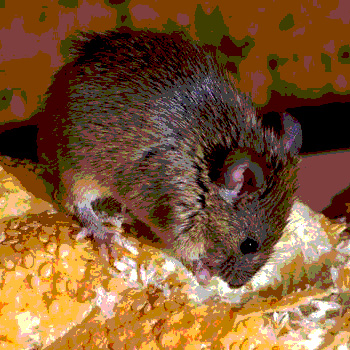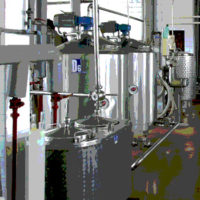Integrated pest management programs are becoming commonplace in food processing facilities for a number of reasons. Because pest management can account for up to 20 percent of a total audit score, there’s a lot riding on the success of your pest management program. A successful program is dynamic and active, not reactionary. However, a pest management program can change over time as needed based on pest trends and activity, facility conditions and seasonality.
An ongoing, comprehensive and well-documented integrated pest management program that focuses on exclusion, sanitation and facility maintenance to help prevent pest activity is ideal for food processing facilities and is the best approach to achieving dynamic pest management. Such a program is proactive, using chemical treatments only as a last resort, and then only in targeted areas. This is the preferred pest management practice of NSF International’s food safety audits and helps meet and exceed the requirements of other industry auditors.
But what does such a program really look like? Work with a pest management professional to make sure your integrated pest management program touches these four bases.
Pest Prevention Starts outside Your Facility
There are several exclusion tactics you can use to help keep pests locked out of your facility, starting with your facility’s structure. Keep an eye out for any cracks that may develop in your building’s rooflines and exterior walls and seal them with a weather-resistant sealant and metal mesh. Install weather stripping around doors and windows and change the stripping regularly to close any gaps that may develop.
Autumn is also the perfect time to take a look at any flat roofs and gutters to ensure that pools of water or wind-blown debris like tree branches are not present—these are both conditions that may attract pests. You may need to trim any tree limbs that have grown over the summer to overhang the roof. Keep in mind that overhanging branches and foliage may not be visible from ground level.
In addition to overhanging branches, you can trim back bushes and plants to create at least a two-foot buffer around your facility. Instead of mulch, which can harbor pests, consider installing a gravel strip around your facility’s perimeter. The uneven gravel obstructs pests like ants and cockroaches from approaching and also discourages rodents, which generally avoid open spaces.
Outdoor lighting is also a focus. You can deter flying insects by swapping out mercury vapor lamps, which attract pests, with sodium-vapor lights outside next to entryways. To draw them away even more, consider placing these attracting mercury-vapor lights at least 100 feet from your building.
You can also help ground-flying pests with an air curtain they can’t fly through by vertically mounting fans on either side of a doorway. Make sure air is blowing out at your entrances, not in. Work with an HVAC professional to make sure you have positive airflow. Test this by holding a piece of paper in a doorway and see which way it blows. If the paper blows outward, you have positive airflow.
A Clean Facility Is a Pest-Free Facility
Sanitation is a pillar of integrated pest management because it helps eliminate the factors that attract pests to your facility in the first place: food, water and shelter.
The production floor and storage areas in your facility are the most important areas of focus for sanitation indoors, as this is the main point of exposure for food products. On the production floor, large, hard-to-reach equipment can offer a perfect home for pests, while the production line provides plentiful food sources and places for bacteria to grow.
To keep these areas clean, sanitize all equipment and machinery on a regular basis, paying extreme attention to areas that are out of sight. Also, remove drain lids and disinfect the drains with an organic cleaner to prevent grease, gunk and debris that can attract pests and block the passageway.
In storage areas, clean all containers before placing new products inside. Remove unused boxes and equipment so that pests are less likely to find areas for shelter and reproduction. Last, keep wet mops and cleaning equipment off the ground to decrease standing water and bacteria formation. Instead, make sure to hang them up so they will fully dry.
Monitor Results and Adjust Program as Needed
Dynamic pest management programs are site-specific and based on pest trends that occur over time. This leads us to the topic of monitoring, which is another pillar of integrated pest management. Monitoring is the key to determining the best strategies for your program, including the most effective placement of traps and other pest management devices. Monitoring should occur on an ongoing basis through regular inspections by your provider and documentation. Additional check-ins should also be performed periodically – ideally by one of your pest management professional’s supervisors.
Equally important as the periodic visits is the annual facility assessment, which should be conducted by your provider to identify any chronic issues your facility has faced. Often these chronic issues become apparent when your provider reviews the documentation that was completed at the end of every service visit, as well as the pest activity trends analysis and the evaluations from the periodic visits conducted by your pest professional’s supervisor.
During your annual facility assessment, your provider may ask if you’ve made any modifications inside or outside the facility—did you install any new equipment, experience any damage to your building or enforce any new procedures for staff? It’s likely that you did make some changes, which means that your pest management provider may need to take a modified approach to your situation and create a new strategy as a result.
All of these visits provide opportunities for a fresh set of eyes to take a look at your facility’s current pest situation and reevaluate the components of your integrated pest management program. After each visit, your provider should be adjusting your integrated pest management program accordingly, based on pest trends and any other problems that were identified. These adjustments are the linchpin to ensure your integrated pest management program is dynamic, instead of stagnant.
A Knowledgeable Staff Is Key
All employees should know about “hot spots” in your facility where pests can thrive and serve as a lookout for pest activity. They should also understand how their daily responsibilities are tied to the daily, weekly and monthly sanitation schedules.
Work with your employees to make sure their break areas are clean and free of crumbs as well. Remember to empty trash cans and recycling bins frequently, especially if they contain food waste. Use liners and cover all trash cans with tight-sealing lids to restrict odors from escaping and attracting flies and other pests.
Many pest management providers offer complimentary staff trainings or educational materials such as tip sheets and checklists to help put pest management into perspective.
Work with your pest management professional to implement these procedures at your facility to ensure your pest management program is dynamic.
Zia Siddiqi, Ph.D., B.C.E., is the director of quality systems with Orkin.


